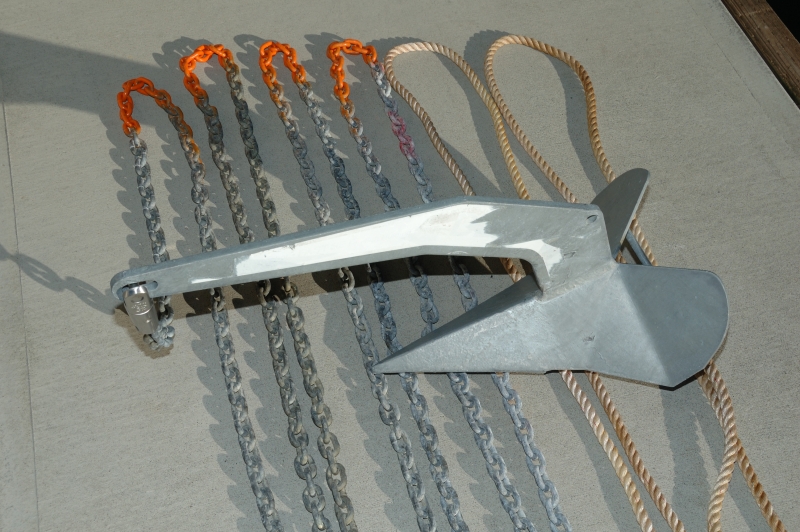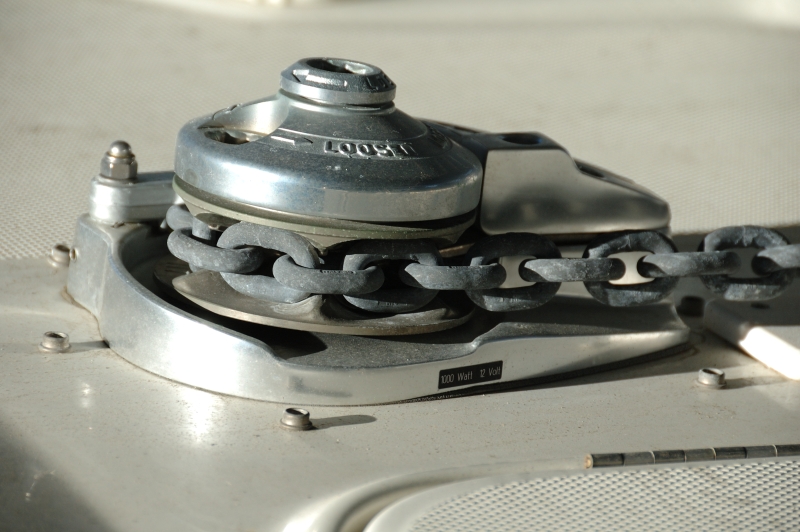Getting Your Boat’s Ground Tackle Ready
5th August 2024
Ground tackle is one area that maintenance is often overlooked. While typically simple in makeup, there are a myriad of ways for ground tackle to not function when you most need it to. Often, it is the result of poor improper or deferred maintenance.
To be confident of your ground tackle’s holding ability, it must be periodically checked and maintained. Begin by hauling the entire rode, anchor, chain, and rope, out onto the dock, leaving the bitter end attached. Wash everything including the inside of the chain locker, with a mild boat-soap-and-water solution, followed by a rinse. It is important not to power-wash, it can drive dirt into the inner core of the rope rode, where it can eventually damage it.
Once everything is clean, check the anchor and rode for damage. A bent fluke or shank can weaken the anchor and make it more difficult to set and hold. The anchor should be replaced if the shank is bent to a point where the anchor does not track correctly when drug over the bottom.

Inspect the shackle attaching the chain to the anchor. The shackle pin should unscrew easily. Ensure the shackle moves freely and is not heavily rusted, deformed or severely worn. The clevis pin needs to be secured with stainless locking wire to prevent it from unscrewing.
Next, inspect the rode for deterioration and damage. Heavy rust and deformed links weaken the chain. Examine each link for rust, inter-link wear, gouges, nicks bending and cracking. The chain should be replaced if the links are worn, or the links are elongated – elongation is typically the result of the chain being subjected to stress greater than the rated breaking strength. The links should move easily against each other. If they bind, it is time to replace the chain. Excessive wear will also result in the chain not fitting properly into the windlass or gypsy.
Badly chafed nylon line has only a fraction of its original strength. Rope exposed to the sun for extended periods of time or that is heavily discolored may be weakened by ultraviolet rays or chemical contamination.
Examine thimbles to see that they are tight within the eye they form in the line and are not deteriorated or deformed. A loose or damaged thimble may slip out of the eye, resulting in severe strain and abrasion of the line. Check the splice at the thimble, to ensure the splice has not slipped or is unraveling.
This is an excellent time to service the windlass or gypsy according to the manufacturer’s instructions and locate the emergency manual handle.

Make sure rollers, chocks, and deck cleats are securely fastened. Lubricate rollers and replace cracked or deformed rollers. Check the chain grabber, chafing gear or whatever else you use to secure the stowed anchor. Inspect the anchor bridle and trip line if you use one.
With the anchor and rode laid out on the dock, this is a perfect time to mark or remark as required. There are many methods to mark the ground tackle. A common way to mark chain is with bright orange paint every 30 feet. Nylon 3-strand can be marked with commercially available tag markers wound into the line.
Before stowing the anchor gear onboard, make sure the end of the rode is shackled in the anchor locker. There is nothing worse than watching the bitter end of your rode disappearing over the side.
Moving the anchors and rode around and performing preventive maintenance can be arduous work, but the resulting peace of mind will make it all worthwhile.


